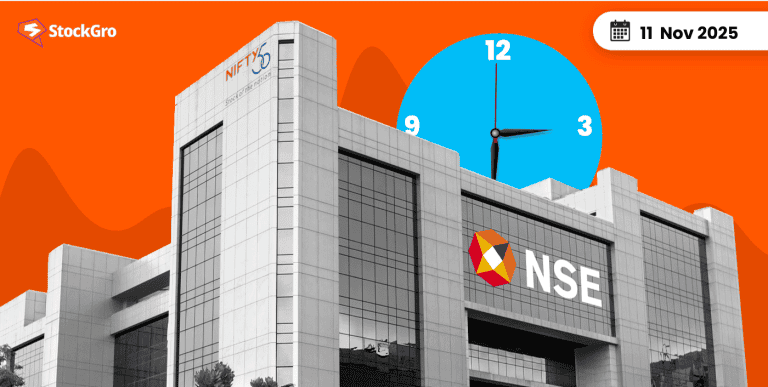
In recent months, intraday trading has drawn renewed attention, especially after SEBI introduced updated rules to enhance oversight of derivative positions. While regulations aim to bring more transparency and stability, many traders see this as a chance to refine their strategies and operate more efficiently. This shift has, however, sparked a question: Is intraday trading still profitable in today’s market landscape?
Yes, it is, but it is a high-risk game, and it depends on skills, discipline, and knowledge of the traders. In this guide, we shall explore what intraday trading really means, the success rates and factors that influence profitability, key risks to watch out for, and the proven strategies and tools that can help in enhancing the whole trading performance.
Additionally, when comparing day trading vs long-term investing, intraday trading demands more active monitoring, faster decision-making, and sharper emotional control, whereas long-term investing focuses on patience, compounding, and stability.
Read further to know more about “Is intraday trading profitable?”.
1. What is Intraday Trading?
Intraday trading, or day trading, is the practice of buying and selling financial instruments, like stocks and options, within the same trading day to profit from small price fluctuations. The traders need to close all positions before the market closes, or else open positions are automatically closed by the broker at the end of the day.
“Is Intraday Trading Profitable?”
Yes, intraday trading is profitable if it is combined with skills, discipline, and market knowledge. However, a significant portion of retail traders lose their money on intraday trading, which reflects how risky it is.
While profitability exists, data suggests that intraday trading is exceptionally challenging, as most participants ultimately face financial losses. It is recommended that beginners start with a demo account and focus on learning before risking any real capital.
2. Profitability in Intraday Trading
Profitability in intraday trading depends on personal discipline, strategy, and market conditions. Intraday trading is a risky activity with low success rates, especially for individual retail traders.
2.1. Success Rates and Statistics
These intraday trading statistics show that a significant portion of individual traders lose money on intraday trading:
- Failure Rates: There are multiple studies and reports that indicate around 70% to 90% of individual intraday traders suffer net losses.
- Long-Term Success: In the case of intraday trading, only a small fraction of traders achieve long-term, consistent profitability. The studies show that only about 10-15% of intraday traders become successful, with a mere 1% achieving consistent success for over five years.
2.2. Factors Influencing Profitability
- Risk Management: The experienced traders usually implement techniques such as stop-loss orders, position sizing, and risk-reward ratio, for example, a risk-to-reward ratio of 2:1 or 3:1.
- Discipline and Emotional Control: Emotions like greed and fear often lead traders to make impulsive and irrational decisions, which cause losses. So, having and sticking to a well-defined trading plan is very important.
- Market Knowledge and Analysis: The understanding of the market fundamentals, technical analysis, and how to interpret market data and news is also important to stay aware of the market.
3. Risks Associated with Intraday Trading
- Market Volatility and Unpredictability: It involves factors such as price fluctuations, gaps, and slippage, when the price of a stock changes suddenly between trades with no activity in between, for example, news after the market hours, and overnight risk.
- Financial Risks: Traders usually use borrowed funds to make investments, which increases both the possibilities of profit and loss. Additionally, the transaction costs, low liquidity, and capital loss further impact profitability.
- Operational and Psychological Risks: If the trader engages in emotional trading, lacks discipline, and overrely on technology, it causes costly errors. The fast pace may lead to addiction, and misinformation or technical glitches might further increase losses and stress.
4. Strategies to Enhance Profitability
In order to enhance the profitability of intraday trading, using technical analysis for identifying opportunities and stricter risk management to protect capital could change the game.
4.1. Technical Analysis Techniques
- Trend and Momentum Indicators: The traders should track Moving Averages (MA) and Moving Average Convergence Divergence (MACD) to identify trend direction and the price movement.
- Volatility and Strength Indicators: The traders can use the Relative Strength Index (RSI) and Bollinger Bands, which help to identify overbought or oversold levels and reversals or breakouts.
- Price Action and Confirmation Tools: The traders should study support and resistance levels, chart patterns, and volume analysis to identify breakout zones, verify trends, and plan entry or exit timing.
4.2. Risk Management Practices
- Use Stop-Loss Orders: The traders must set a stop-loss to close losing trades at a pre-set level to protect their capital from further losses.
- Follow a Risk-Reward Ratio: The traders shall take positions where the expected profit outperforms loss, for example, 1:2 or higher, to stay profitable.
- Stay Emotionally Disciplined: The traders must prepare and comply with a trading plan to avoid impulsive moves driven by fear or greed and maintain discipline through market fluctuation.
5. Case Studies: Success and Failure Stories
Case Study 1: Super Trader Lakshya: From ₹5,000 to Crores
Lakshya, a 31-year-old from Indore, began trading in 2008 with just ₹5,000. Initially, he faced losses before shifting to disciplined option-selling. After that, by focusing on risk control, avoiding leverage, and targeting steady monthly returns of 5%, he built a consistent income stream, showing that patience and structure can outperform aggression in intraday markets.
Case Study 2: A Significant Portion of Retail Traders Lose
A SEBI study revealed that 71% of intraday traders in the period 2022–23 suffered losses, and the numbers rose to 80% for those executing over 500 trades annually. The young traders under 30, though enthusiastic participants, faced the biggest losses. The findings highlight how excessive trading without a strategy or discipline impacts profitability.
6. Tools and Resources for Intraday Traders
- Trading Platform with Advanced Charting: The traders can choose trading platforms that provide features like real-time charts for live, customisable charts, and integrated tools that combine charting, news feeds, and scanning software, which supports fast decision-making.
- Real-Time Market Data and News Feeds: Intraday trading is heavily influenced by ongoing events and market sentiment, and the traders should keep a track of live news feeds and market data to confirm the strength of price movements and identify liquid stocks.
- Analytical Tools and Indicators: The traders should use technical analysis tools and indicators, such as RSI, moving averages, and Bollinger bands, to identify trends, measure momentum, and spot trading opportunities.
7. Conclusion: Is Intraday Trading Worth It?
Yes, Intraday trading is worth it and could be highly profitable for skilled, disciplined, and committed individuals. However, it might not be worth it for most people, especially beginners, due to the extremely high risk and low success rates among retail traders.
It is a demanding, high-risk effort, not a guaranteed way to make profits. It is a zero-sum game where one person’s profit is another’s loss, and the retail traders usually compete with institutional players and high-frequency algorithms.
FAQ‘s
Intraday trading, or day trading, is the buying and selling of financial instruments within the same trading day to profit from short-term price movements, and the positions are to be closed before the market closes.
The traders can minimise their losses from intraday trading by setting stop-loss orders, maintaining a healthy risk-reward ratio, trading with discipline, and avoiding emotional decisions driven by fear or greed.
In intraday trading, the traders buy and sell stocks, futures, or options within a single day, and use price fluctuations to earn profits. They rely on market trends, charts, and technical indicators to make fast, data-driven decisions.
The strategies for intraday trading include using technical tools and indicators like moving averages and MACD, and momentum analysis with RSI and Bollinger Bands, supported by strong risk management.
It can be, however, most beginners lose their money on intraday trading due to a lack of knowledge, poor strategy, and experience, as success requires education, practice on demo accounts, and a focus on managing risk before chasing profits.
There’s no fixed amount, but starting small is better with around ₹5,000 to ₹10,000, which allows beginners to learn with limited risk.
The risks of intraday trading include market volatility, leverage-induced losses, emotional decision-making, technical malfunction, and misinformation, and without proper strategy and discipline, traders will lose their entire capital faster.

